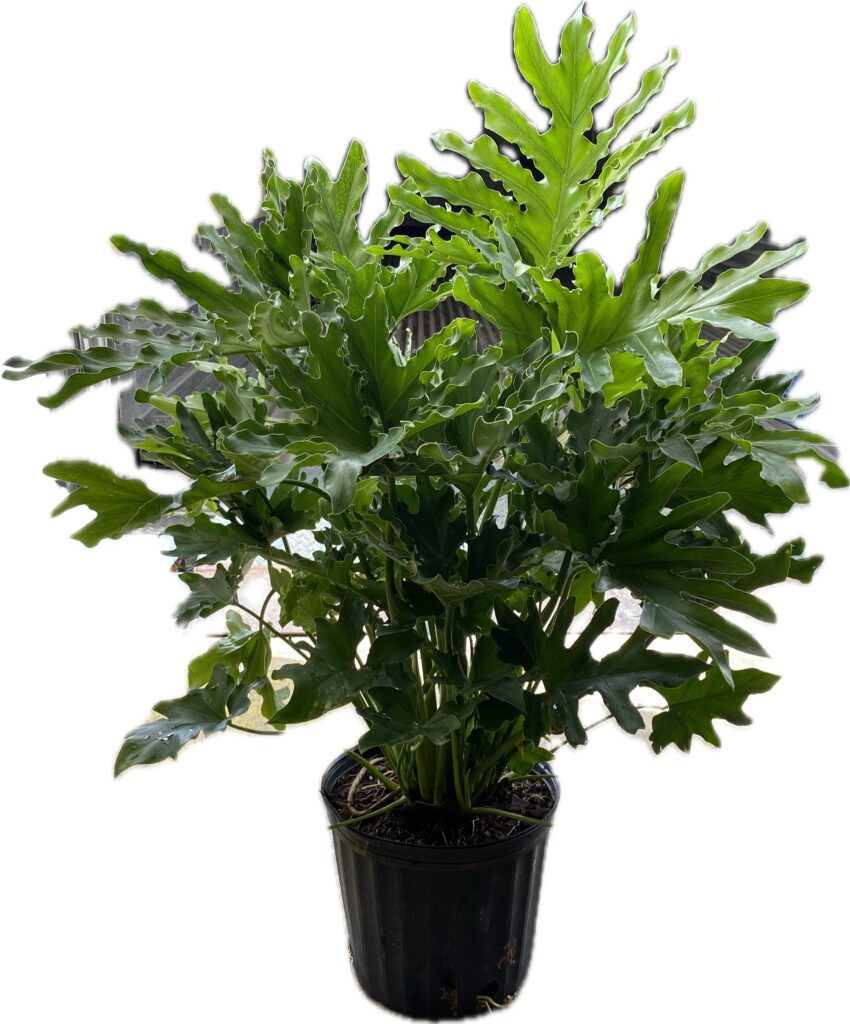
Selloum plants, also known as Philodendron selloum or Philodendron bipinnatifidum, are popular houseplants known for their striking foliage and relatively easy care. They are part of the larger Philodendron genus, which includes many varieties of tropical plants.
We have Selloum plants available in 10″ pots.
Here’s a comprehensive guide to caring for Selloum plants:
Climate and Location
Temperature: Selloum plants prefer warm temperatures, ideally between 65-80°F. They can tolerate slightly cooler temperatures but should be protected from frost and drafts.
Light: They thrive in bright, indirect light but can tolerate lower light conditions. Avoid direct sunlight, as it can scorch the leaves. If grown indoors, a spot with filtered light is ideal.
Soil Requirements
Type: Use a well-draining potting mix. A mix designed for houseplants or a blend of peat, perlite, and pine bark works well. Good drainage is essential to prevent root rot.
pH: They prefer a slightly acidic to neutral soil pH, around 6.0 to 7.0.
Watering
Frequency: Water the plant when the top inch of soil feels dry. During the growing season (spring and summer), they may need more frequent watering. In the fall and winter, reduce watering as the plant’s growth slows.
Method: Water thoroughly until excess water drains out. Avoid letting the plant sit in standing water to prevent root rot.
Fertilizing
Type: Use a balanced, water-soluble fertilizer or one high in phosphorus for better leaf growth.
Frequency: Feed the plant every 4-6 weeks during the growing season (spring and summer). Reduce or stop fertilizing in the winter when the plant’s growth slows.
Pruning
Purpose: Pruning helps maintain the plant’s shape, remove any dead or damaged leaves, and encourage new growth.
Method: Trim back any overly large or unruly stems. You can also cut back the plant to promote bushier growth.
Pests and Diseases
Pests: Watch out for common pests like spider mites, mealybugs, and aphids. Regularly inspect the plant and treat any infestations with insecticidal soap or neem oil.
Diseases: Be cautious of fungal issues, particularly if the plant is overwatered. Ensure proper air circulation and avoid overhead watering to prevent mold and mildew.
Repotting
Frequency: Repot every 1-2 years or when the plant outgrows its container. This also gives you a chance to refresh the soil and inspect the roots.
Method: Choose a pot that is 1-2 inches larger in diameter than the current one. Gently remove the plant from its old pot, loosen the roots if necessary, and place it in the new pot with fresh soil.
Special Considerations
Toxicity: Like many Philodendrons, Selloum plants are toxic if ingested. Keep them out of reach of pets and small children.
Support: As the plant grows, it may need support for its large, heavy leaves. A stake or trellis can help keep the plant upright.
Selloum plants are appreciated for their dramatic, deeply lobed leaves and can be a striking addition to any indoor space. With the right care, they can grow into impressive specimens that add a lush, tropical feel to your home.
If you have any questions, feel free to call us at (352) 735-8350 or come by the nursery. Our hours are Monday-Friday 8-5 p.m.
